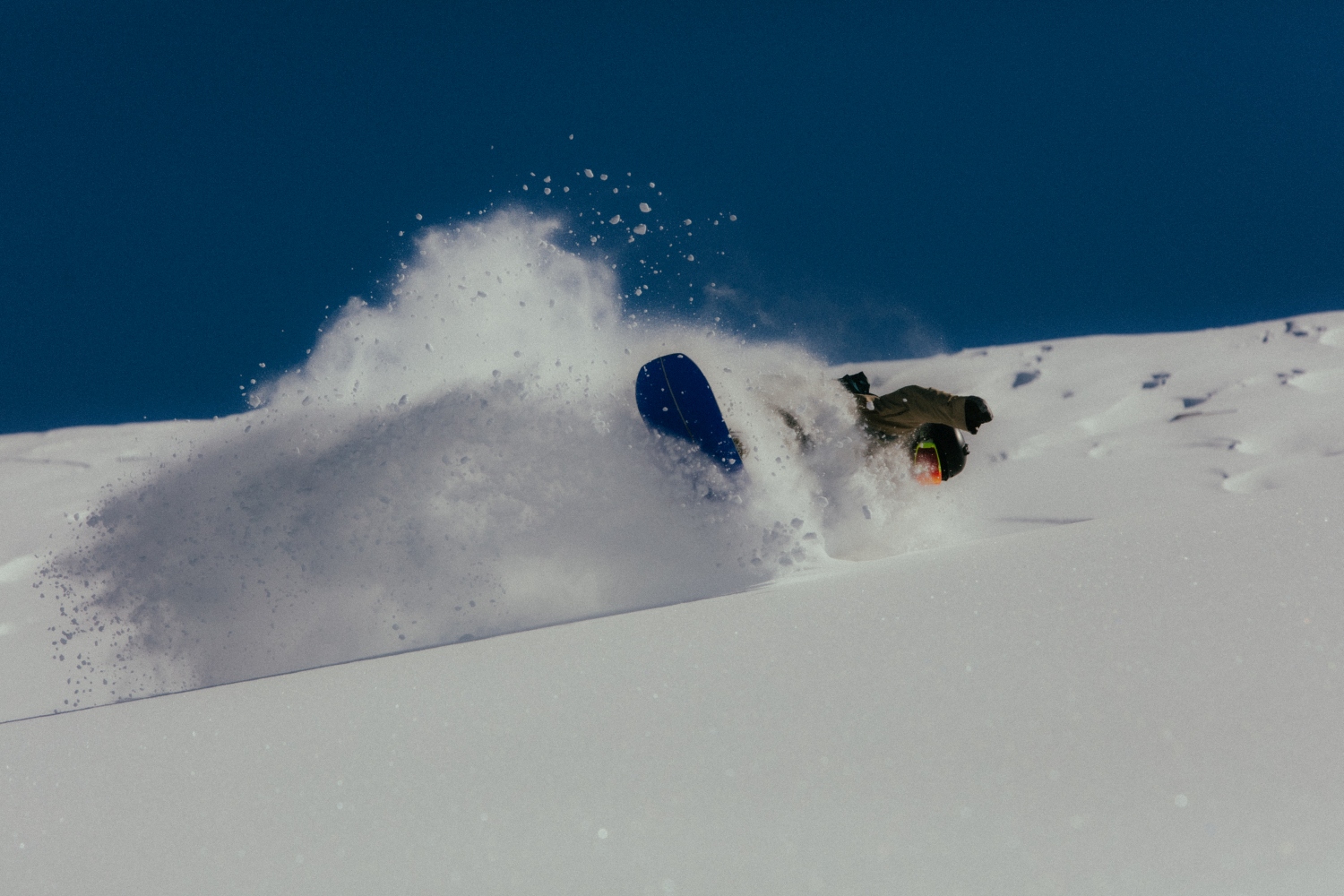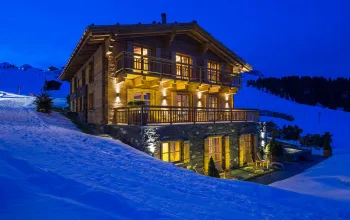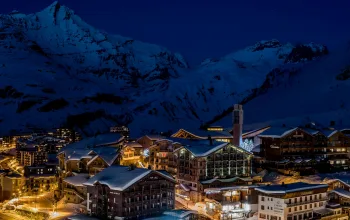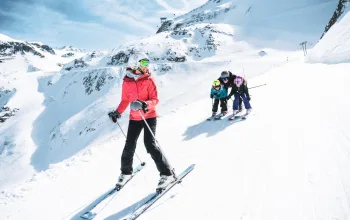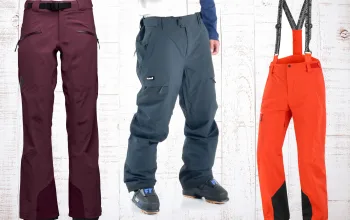Freeride snowboards are made for powder hounds: riders who love nothing more than heading deep into the backcountry and ripping through the lightest, fluffiest snow they can find. Tuned for maximum flotation in the soft stuff these powder snowboards are specialist beasts.
They won't beat a beginners' board or an all mountain model when it comes to piste cruising, and they're not ideal for the snow park. But that's not the point. They're built with one thing in mind: to make powder days the best they can possibly be.
Why should you buy a freeride snowboard?
Really, it comes down to a question of budget, how much time you'll get on snow, and riding preference. As explained above, a powder snowboard is a specialist beast. If you're only going away for a week or so each season, you can't guarantee that you'll get the right conditions to ride it in. Most all mountain snowboards handle powder pretty well, and are more versatile, to boot.
If it's going to be your one and only snowboard, we'd recommend buying an all mountain model—unless, of course, you're lucky enough to live near the snow (so can pick and choose your days, and only ride when there's powder). However, if you've got the budget to buy a second snowboard, then these are the beasts you want to start looking at.
"These are built with one thing in mind: to make powder days the best they can possibly be"
Assuming you already have a pair of snowboard boots and snowboard bindings that you're happy with, adding a powder board to your kitbag opens up a whole world of possibilities. Wave goodbye to back leg burn, as you sail past your mates getting stuck in the deep, fresh snow.
Pack right, and you can easily get two boards under the airline weight limit (as long as you're not taking two pairs of bindings or boots). That way, when it does dump while you're in the mountains, you'll have the time of your life. There's full buyers' guide to powder boards, explaining what to look for and what the technical terms mean, below.
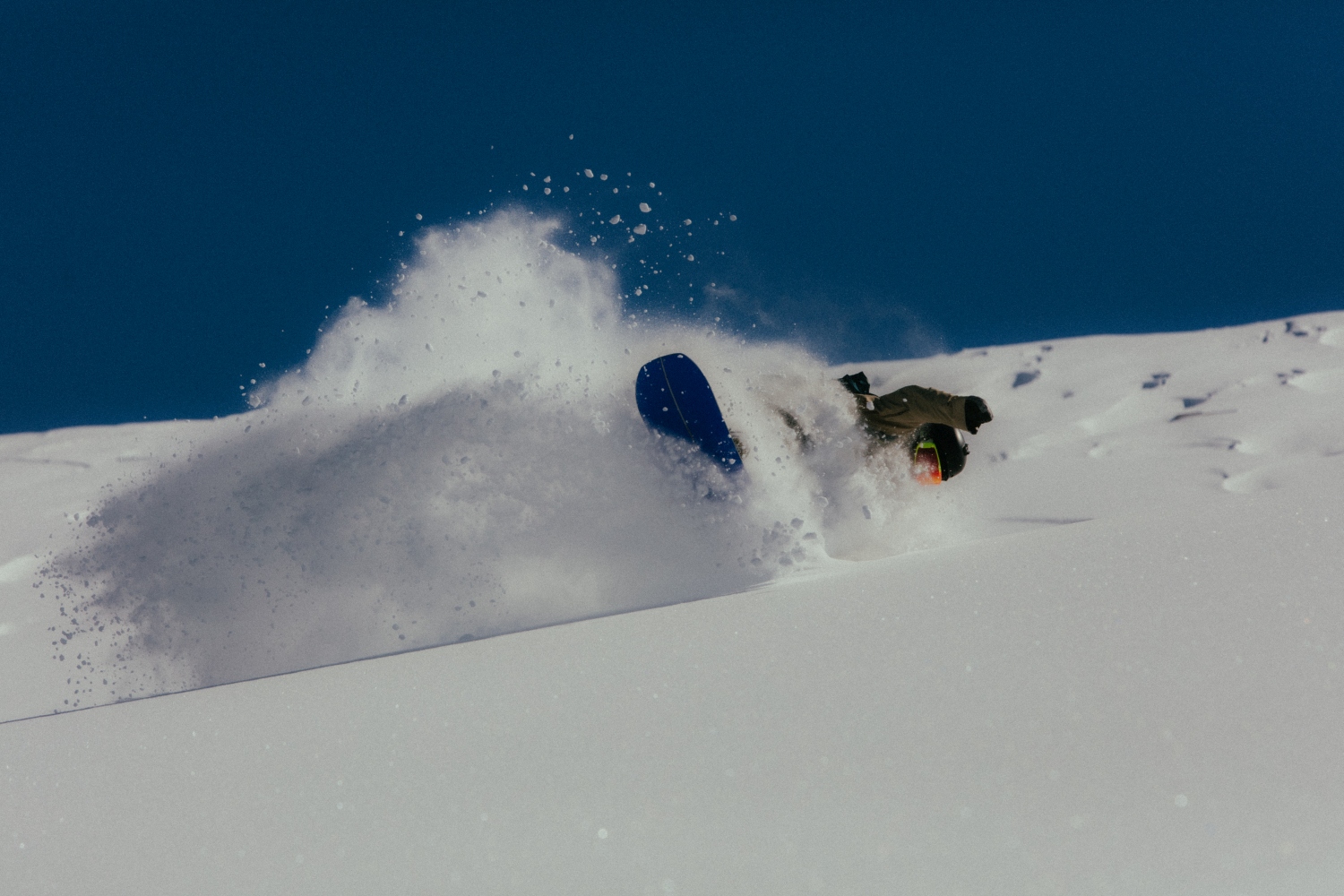
What about splitboards?
If a powder board opens up new possibilities, a splitboard goes one step further. Splitboards, as the name implies, split down the middle to form two "skis". Strap skins to the bottom of these, and you can basically go anywhere you want on the mountain, within reason.
"If a powder board opens up new possibilities, a splitboard goes one step further"
Splitboards tend to be more expensive than regular freeride snowboards, and you'll need to buy a pair of specialist splitboard bindings too, as well as skins, collapsible poles, and of course the essential avalanche safety gear everyone must carry when heading off piste. If you're buying a snowboard specifically for deep days, however, a splitboard may be worth considering. Once you've started splitboard touring, you won't look back.
This winter, we worked closely with our sister title Whitelines—the UK's oldest dedicated snowboard magazine—to test the best new models. Our joint test team, consisted of riders based in the Italian Dolomites, Fernie in Canada, Wanaka in New Zealand and Helsinki in Finland.
Between them, our testers have over 200 years of snowboarding experience.
They tested well over 100 of this winters' boards, plus boots, bindings, men's jackets, women's jackets, gloves, helmets and other bits of snowboard kit. If need more detail on Whitelines picks (some of which didn't make this shorter list) check out their Whitelines 100.
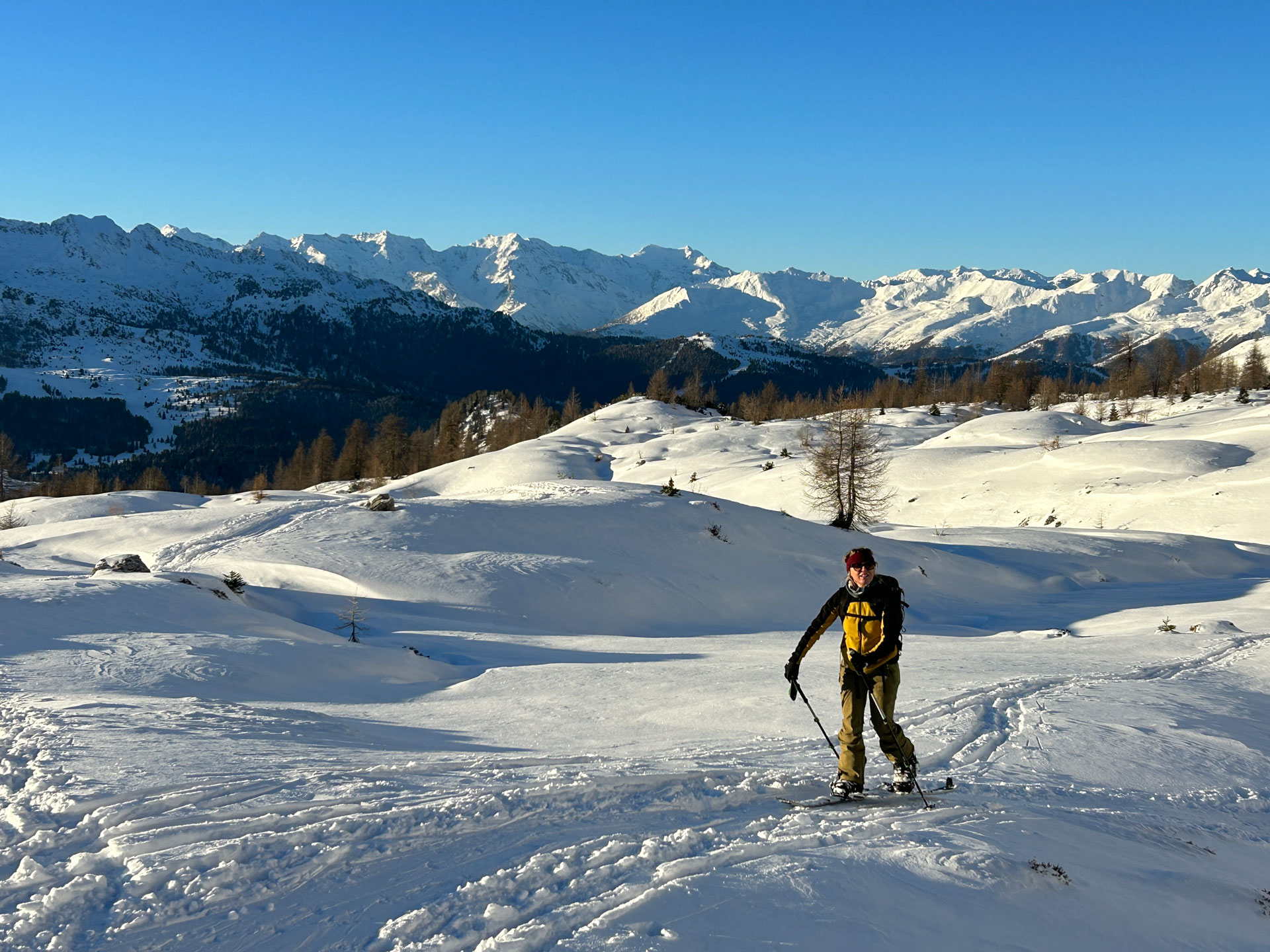
We've tried to select a good range of powder boards from wide waisted models designed for quick turns on tree runs, to long, swallowtail beasts built for straight-lining couloirs. We've listed the boards in alphabetical order below.
We've also included several splitboards, because splitboarding is becoming increasingly popular—it's been the fastest-growing sector of the snowboard gear market for several years running. As explained above, a splitboard provides the ultimate backcountry access: when everything you can reach from the lifts is tracked out, simply strap your skins on, and head deeper into the backcountry.
Amplid Surfari
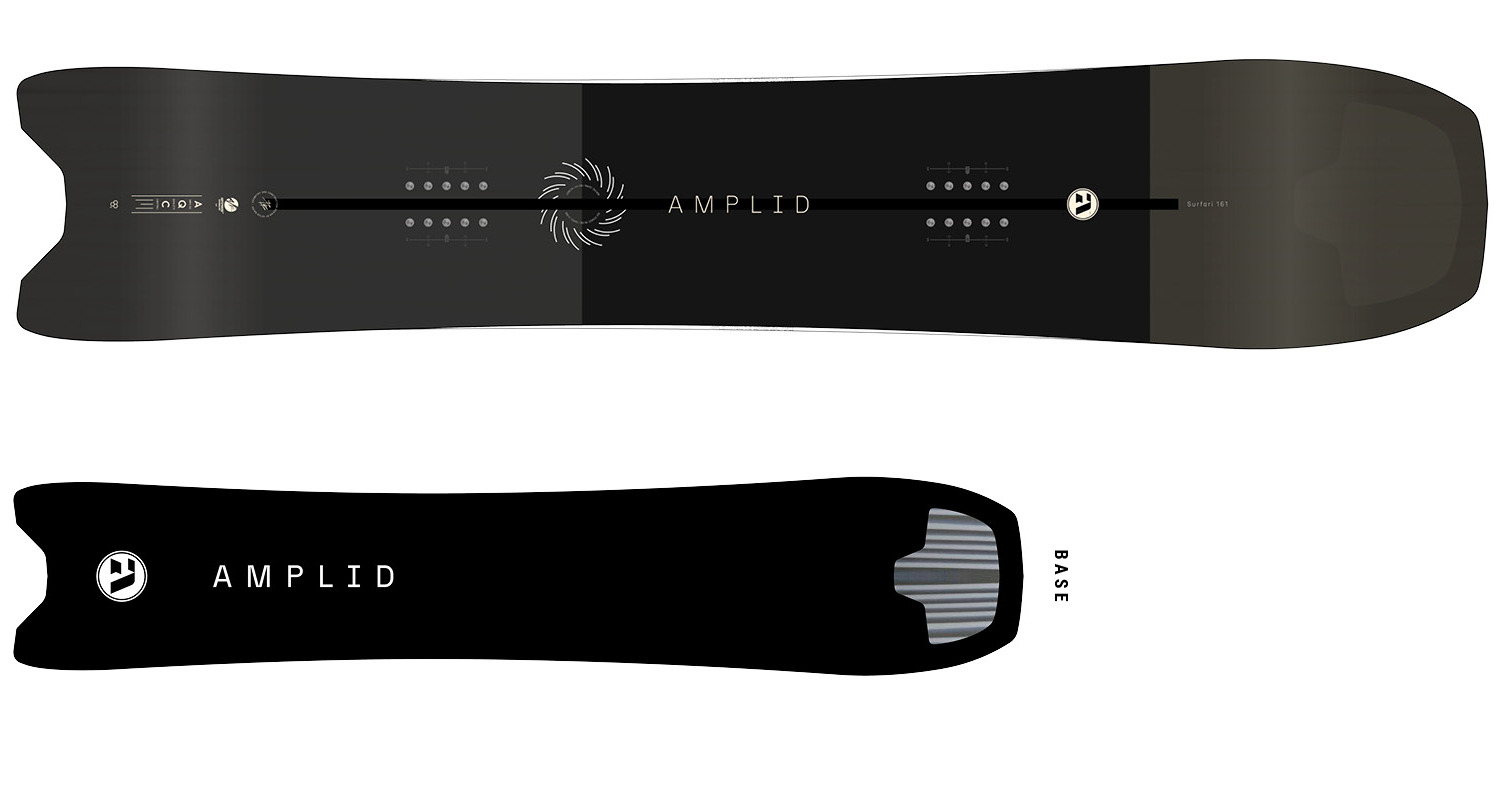
As the name implies, the Amplid Surfari is a freeride board designed for big, floaty carves. The brand, founded by German ex-pro Peter Bauer, is based in Bavaria, and has developed a reputation for precision engineering as impressive as those of fellow Bavarian companies, BMW and Audi.
The Surfari combines a swallow tail, which helps keep your weight back, with a camber profile between the bindings, that makes it feel snappy in and out of turns. The medium flex (a 7 out of 10) is softer than you might find on some powder snowboards, which makes it more forgiving, and easier to ollie. It also makes it surprisingly easy to ride on piste, so while it might look like it's designed purely for deep snow, you can actually surf this stick anywhere on the mountain.
-
Unisex board
-
Flex 7/10
-
Shape Directional
-
Profile Camber
-
Best for Making massive, sweeping turns on all kinds of snow.
-
Verdict Not as stiff or stable as some, but the payoff is that this is more fun and versatile than many powder snowboards.
-
RRP £780
Amplid Milligram Splitboard
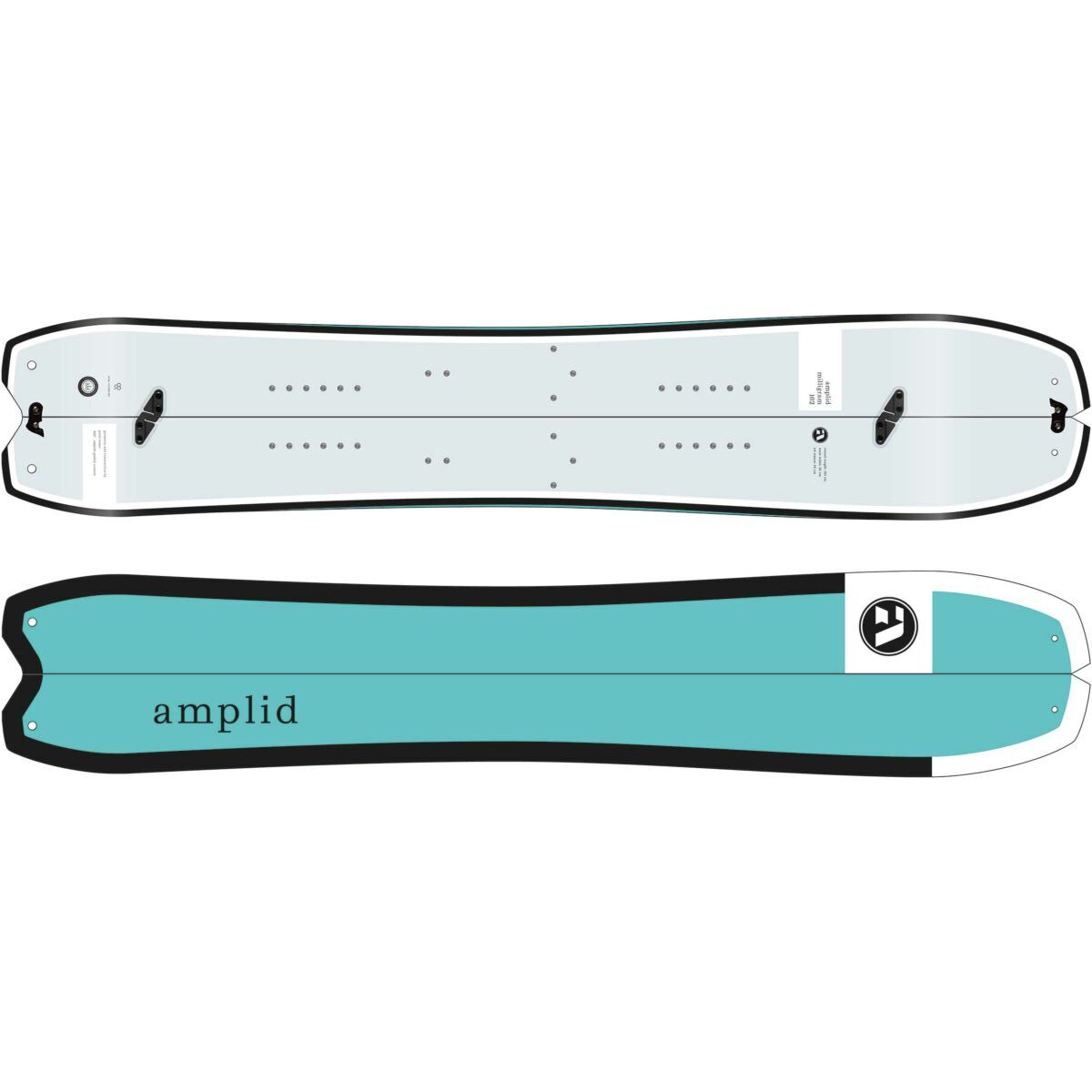
Ask any splitboarder what would make their life easier, and the answer will usually be the same: a lighter setup for the way up that still rips on the way down. Amplid have been perfecting the formula for ultralight boards for years, and this year’s Milligram is their lightest yet. It climbs like an absolute dream—as our tester said “kick turns just feel like they come around easier.”
The 2025 version also has a new tail shape, a redesigned nose, and urethane-coated inner sidewalls that help reduce chatter on the way down. This is especially helpful, because the weight savings mean you sometimes feel chatter if you’re riding chopped up snow.
-
Unisex board
-
Flex 6/10
-
Shape Directional
-
Profile Camber
-
Best for Fast, technical ascents where you'll really feel the weight difference, and flowy, fresh carves on the way down.
-
Verdict The lightweight materials really make a difference. This is probably the best climber we've ever ridden.
- RRP: £1050
Bataleon Surfer
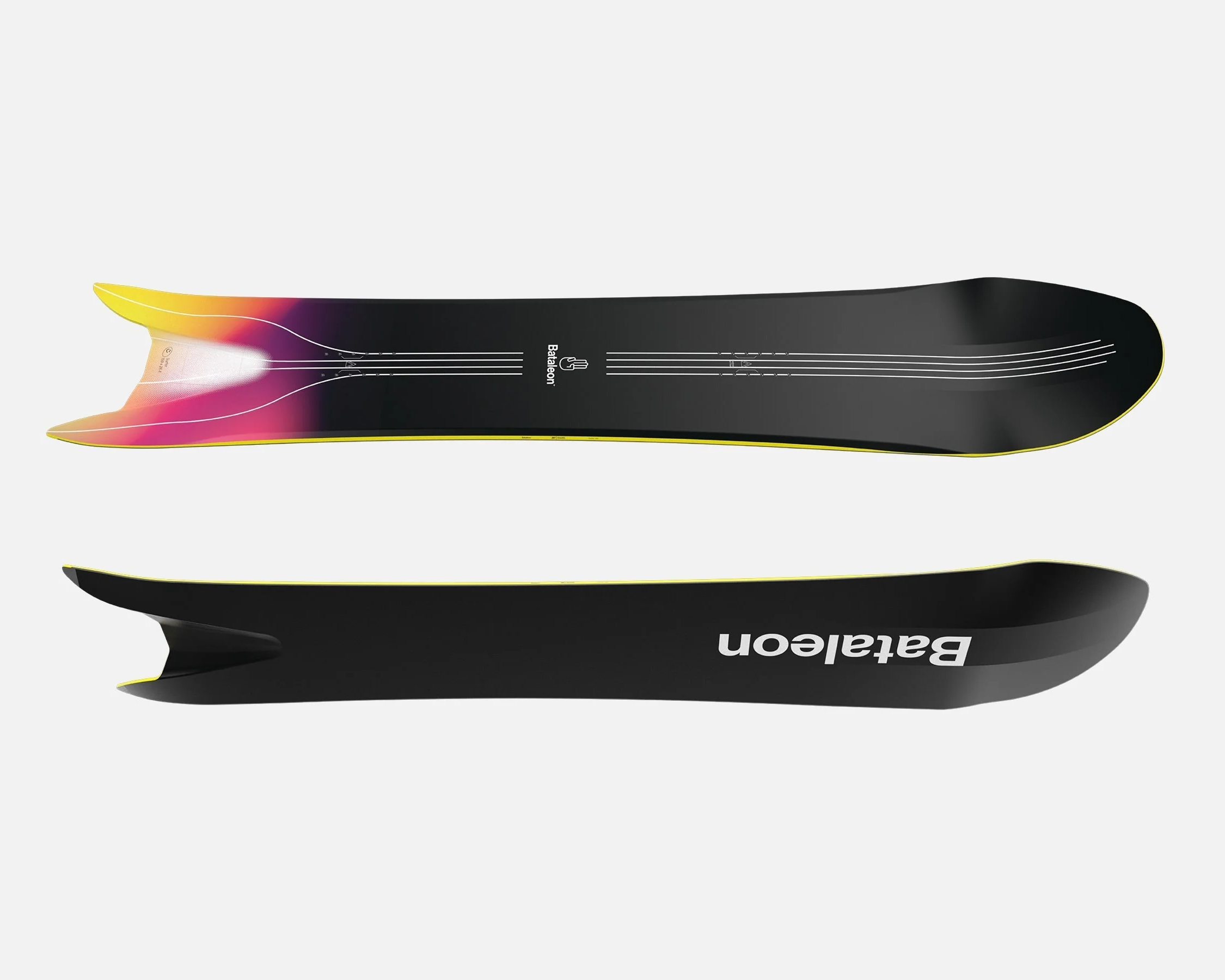
The Surfer has been remodelled for the 2024-25 season, featuring a brand new swallow tail shape, and a more agressive sidecut. Like all Bataleon models, the Surfer features Triple Base Technolgy (3BT)'s distinctive lifted sections on either side of the base—these are designed to make turn initiation easier, and prevent you catching an edge. The Surfer combines 3BT with a massive, spoon-like nose which has a more pronounced side lift on the base to help it float in the deepest snow.
Add in the setback stance, and that new swallow tail shape you can safely forget about back leg burn, even on long runs through Niseko-deep powder. The medium flex (4/10) is softer than you might expect from a powder board—if you're planning on tackling sketchy alpine descents with icy sections, you might want to find something stiffer. But otherwise, this is essentially an 80s style swallowtail with a 21st century twist. For intermediate to advanced riders who want to make the most of the snow when it comes, this is perfect.
-
Unisex board
-
Flex 4/10
-
Shape Directional
-
Profile Camber
-
Best for Floating over any kind of powder, however wet or heavy.
- Verdict Easy to turn and a joy to ride. If you're after a playful powder stick, they don't get much better than this.
-
RRP £800
Buy Bataleon The Surfer Snowboard: £799 on Absolute-Snow.co.uk
Burton Hometown Hero Splitboard
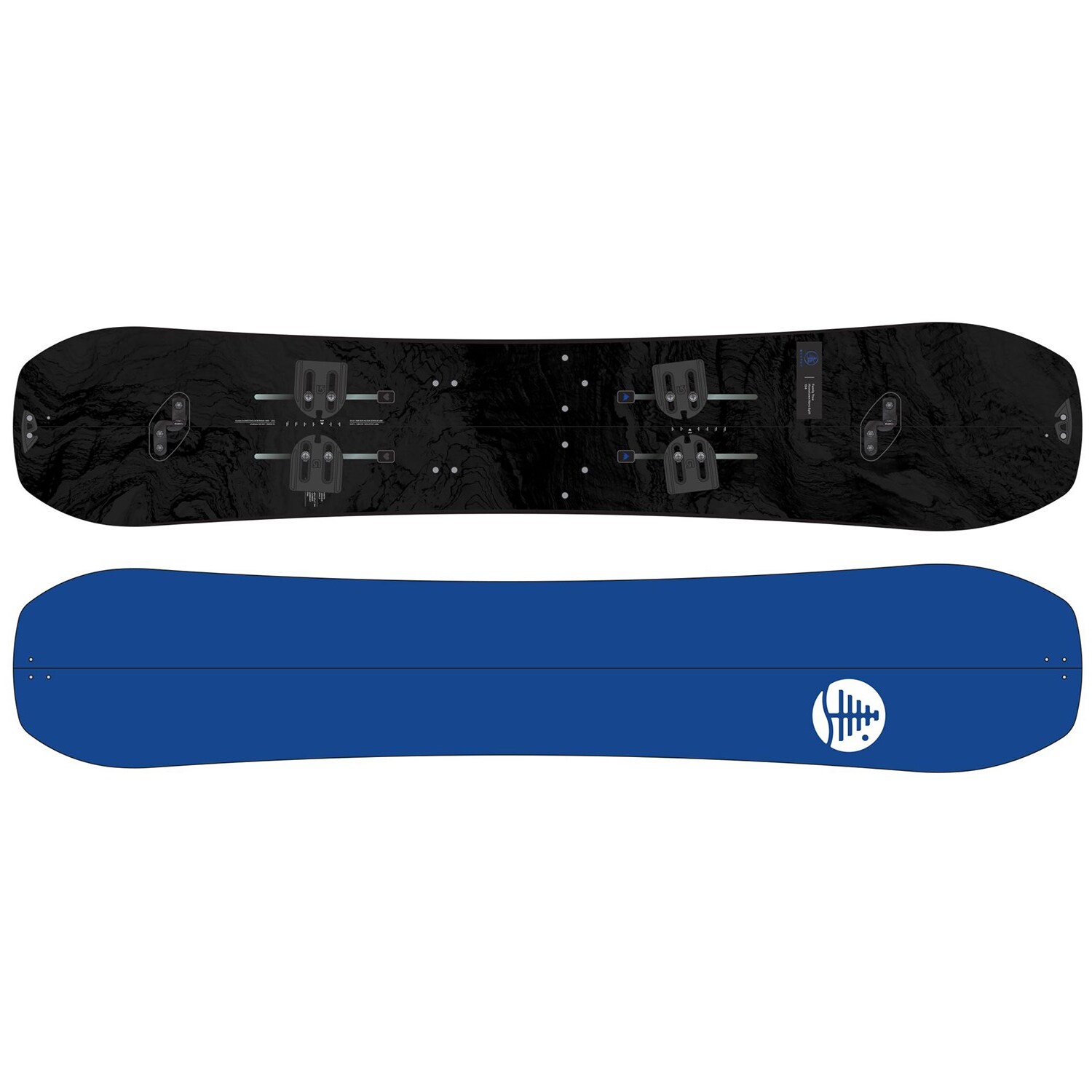
The Hometown Hero was originally designed for ripping through the tree-lined hills near Burton's home base of Burlington, Vermont. But when they started riding the first prototypes, the brand's testers quickly realised this board was a far more versatile beast. The tapered shape, and wide, spoon like nose helps it float in really deep powder, while the mid-stiff flex (which we'd put at about 7 out of 10 on the stiffness scale) helps it power through chopped up snow and crud like it's nothing.
One of our testers rode the splitboard version in a variety of different conditions last winter — from bombing high alpine couloirs in Georgia, to cutting between tight trees in the Dolomites —and said it handled everything with aplomb. "It climbs well, carves like a dream on hardpack runouts and pistes, and never feels anything less than 100 percent solid underfoot," they said. "On at least three separate occasions, I've ridden out of rock drops that I had no right to land, purely because this board is so stable."
Our testers haven't tried it in the backwoods of Vermont yet, but we're willing to bet it would rock there too.
-
Unisex board
-
Flex 7/10
-
Shape Directional
-
Profile Hybrid
-
Best for Splitboarders who want to tackle a variety of different snow and terrain types
-
Verdict Versatile, sturdy and stable, this can tackle anything you throw at it—and it's not too pricey for a split either.
-
RRP £900
Buy Burton Hometown Hero Splitboard: £504 <20% Off> at burton.com
Jones Mind Expander
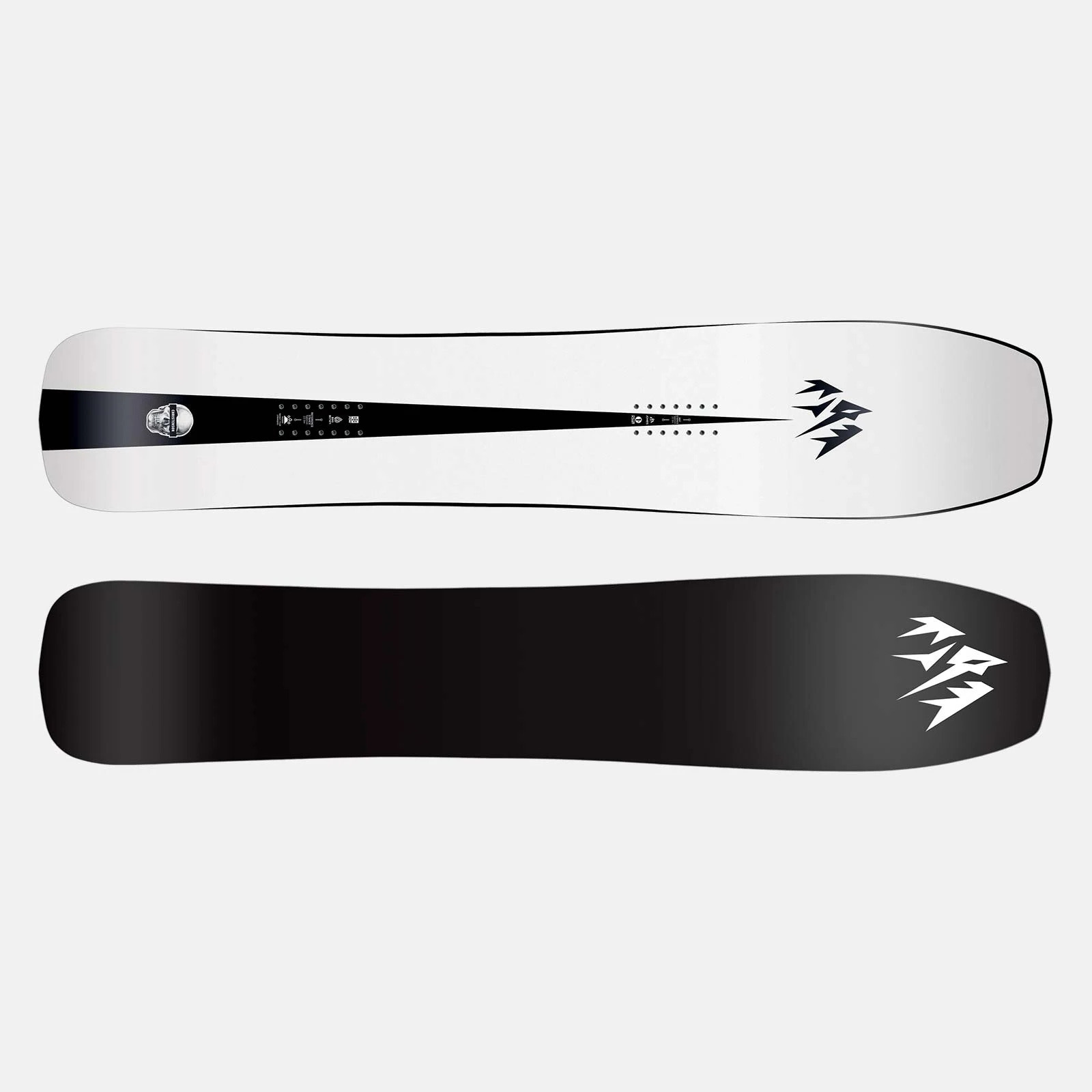
Jones’ magical Mind Expander is a powder board made for the deepest powder days. Jeremy Jones worked with the surfboard shaper Chris Christenson on the shape, and it shows. With its swept up nose and stubby tail, it floats with minimal effort, even at the end of the day when your legs are tired and aching. The brand recently tweaked the stance, moving it forward by 20mm. But the shape is still seriously directional, and the nose is so wide there's no danger of nosing under.
Other recent improvements to the original design include the new surf camber profile, which introduces camber between the bindings for improved edge control and more responsive carving. Traversing hardpack or riding pistes is a surprising amount of fun on this board, helped along by Traction Tech 2.0 edges, which grip better on icy surfaces. If you want a surf-inspired powder board to tear it up wherever you shred, then buy a Jones Mind Expander - it’s sick.
-
Unisex board
-
Flex 4/10
-
Shape Directional
-
Profile Hybrid
-
Best for Floating through the deepest of powder days with ease.
-
Verdict One of the most capable and fun freeride snowboards we’ve ridden.
-
RRP £585
Buy Jones Mind Expander: £519 at absolute-snow.co.uk
Jones Stratos Splitboard
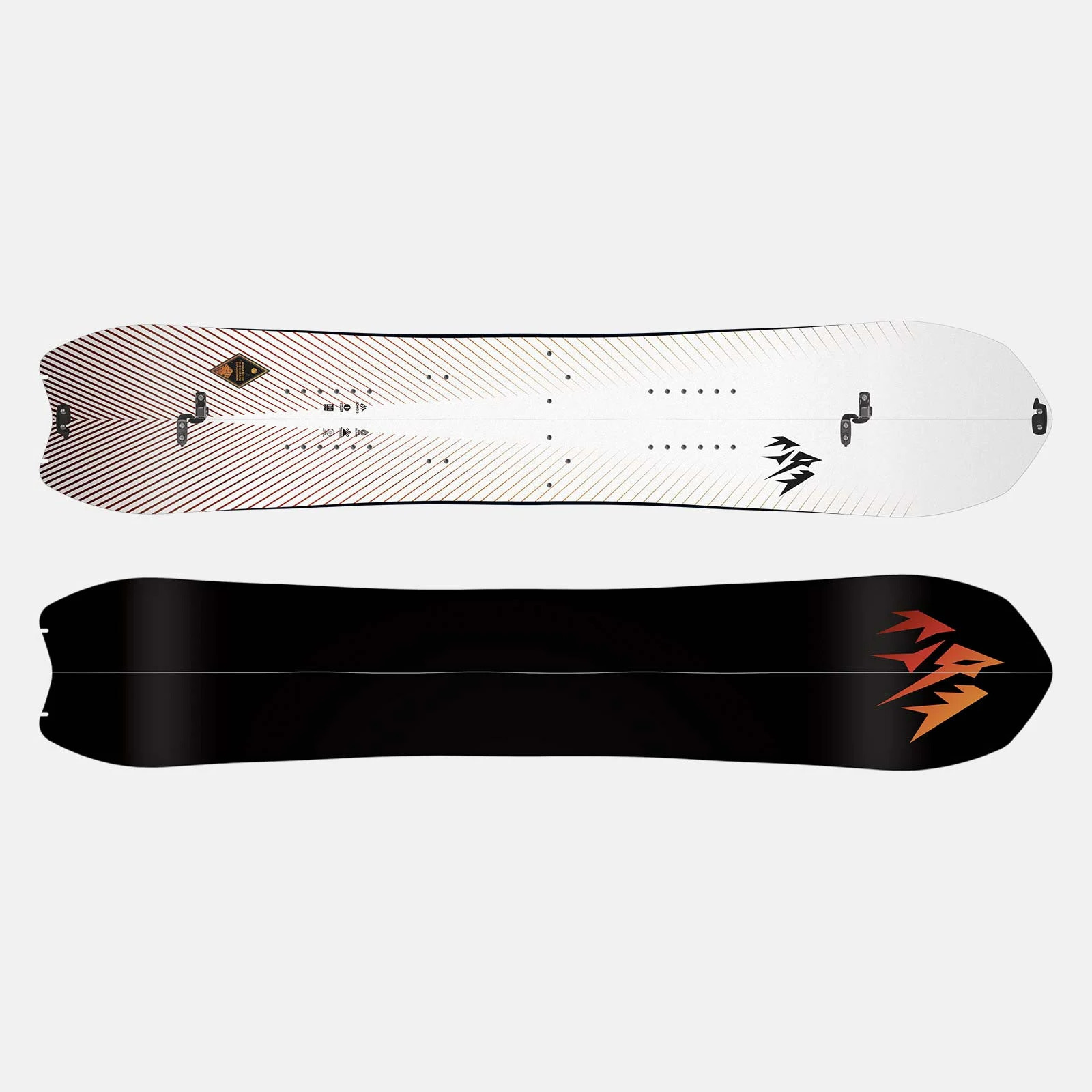
The Stratos was initially built as an experiment. Legendary freerider Jeremy Jones was wondering what might happen if you combined a powder-friendly shape - wide nose, tapered tail, cutaway at the back - with a freestyle flex. What happened, apparently, was that Jones had one of his best ever days on the hill, and immediately ordered a limited production run.
They sold like hotcakes, so unsurprisingly, Jones included it as a proper production model. One of the most versatile ‘freeride’ boards out there, this floats like a dream in powder, and carves like a beast on piste. Despite the directional shape, it can even be ridden switch. This splitboard version takes everything that's great about the Stratos, and adds in the splitboard functionality—which means you can literally take it anywhere. Best of all, the RRP of this board has come down for 2025—which in an age of inflation, is not to be sniffed at!
-
Unisex board
-
Flex 4/10
-
Shape Directional
-
Profile Hybrid
-
Best for Splitboarders who want to tackle a variety of different snow and terrain types
-
Verdict Powerful without being too stiff, this is an experiment that’s paid off in spades.
-
RRP £850
Buy Jones Stratos Splitboard: £579 at absolute-snow.co.uk
Jones Storm Chaser
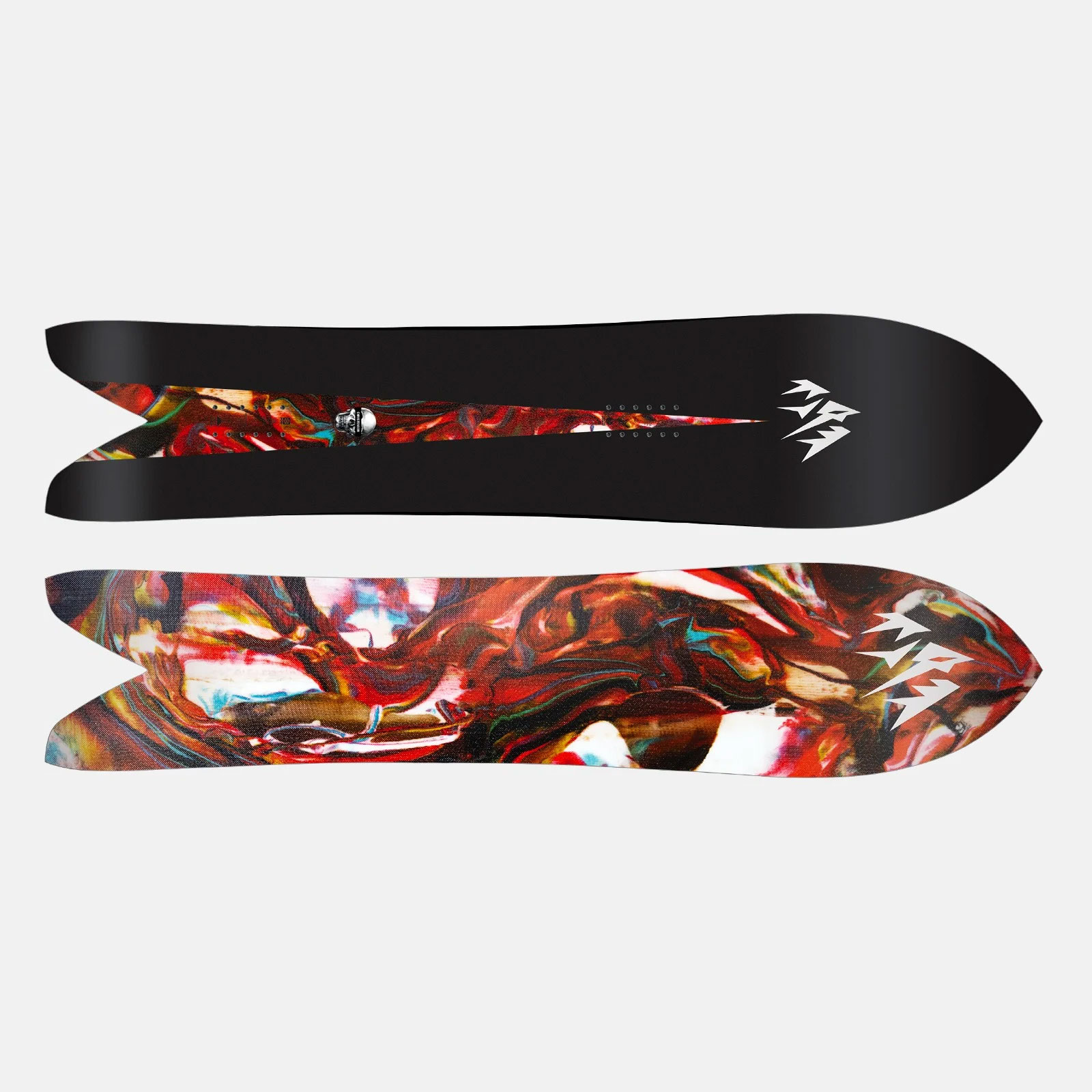
Like the Mind Expander (see above) the Storm Chaser was born from a collaboration with legendary surf shaper Chris Christenson. Although its been part of Jones' range for a while, it has been reimagined for winter 2024-25. It's still got a “volume shift” shape, so it's wider than a traditional board, allowing you to ride a shorter, nimbler length than you otherwise would, but there have been subtle tweaks.
A longer swallowtail and what the brand call a “Surf Camber” profile has made what was already the ultimate board for deep days even better. The Storm Chaser handles perfectly well on the piste, and is a lot of fun to through into euro carves. But where it really excels is low angle terrain, in deep snow. "It’s ideal for cutting between tight trees, or throwing surf-style layback slashes," our tester said.
-
Unisex board
-
Flex 5/10
-
Shape Directional
-
Profile Hybrid
-
Best for Tight turns and tree runs in deep snow.
-
VerdictQuite simply, this board will make the best days even better still.
-
RRP £600
K2 Special Effects
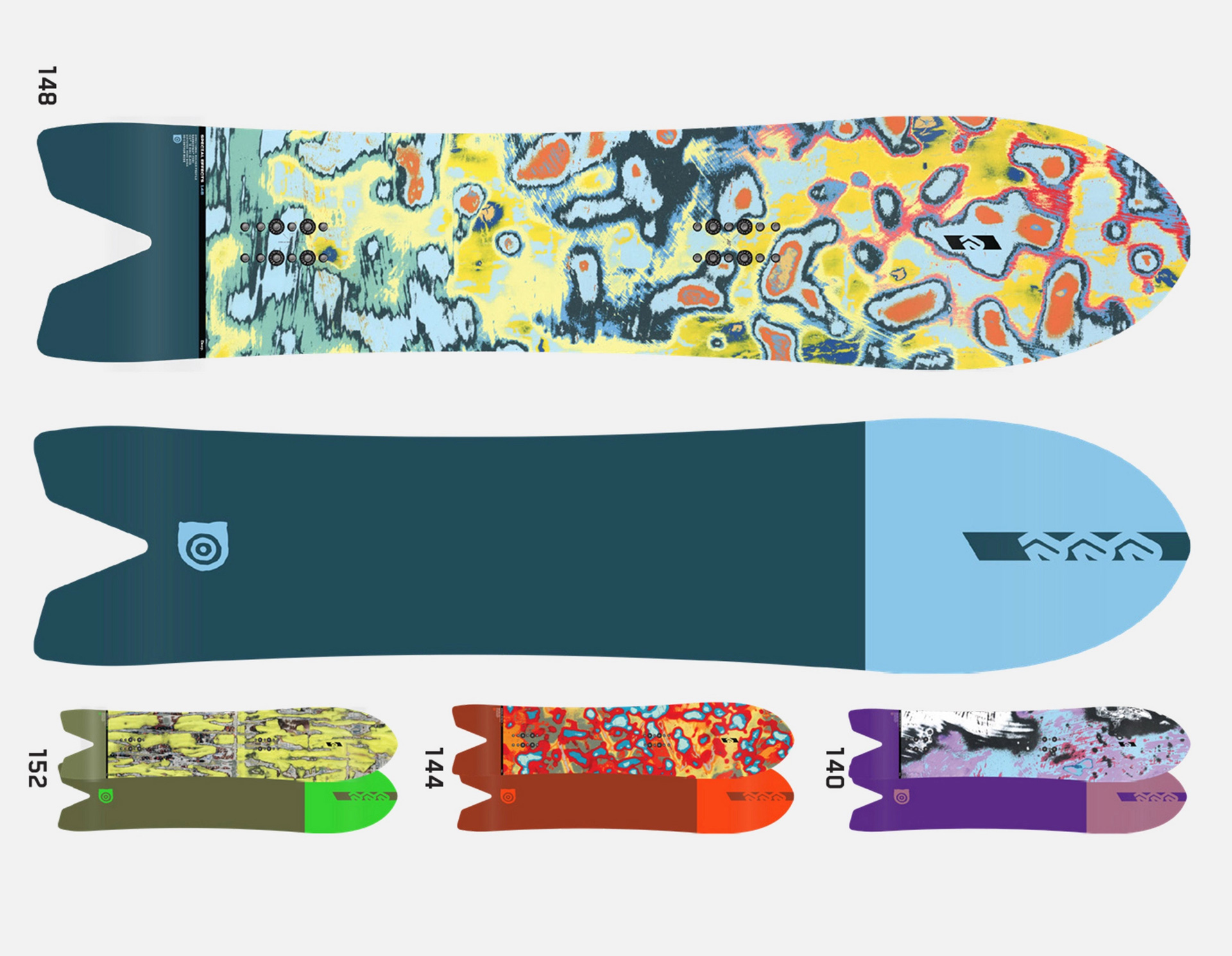
This is a successor to the K2 Cool Bean, which was one of the original 'Volume Shift' boards—powder snowboards that use width, instead of length to increase their float in deep snow. The 2025 Special Effects features a medium flex, and a profile that includes camber between the bindings and a gently rising rocker front and back.
K2's Bambooyah core, made of bamboo, gives this board plenty of snap without losing its easy-going surfy feel. Our testers have used this primarily as a powder board in the past, but it's also brilliant fun on piste, where the ultra wide shape makes for fun carves, and the pop helps you launch off side hits. It might be best in deep snow, but as K2 themselves say, "it can hold its own on groomers, hard pack, and long traverses out to the soft stuff."
-
Unisex board
-
Flex 7/10
-
Shape Directional
-
Profile Rocker
-
Best for Charging in deep snow, holding an edge on ice to get there
-
Verdict A fun freeride board that will handle most terrain types, and won't break the bank either.
-
RRP: £575
Korua Dart
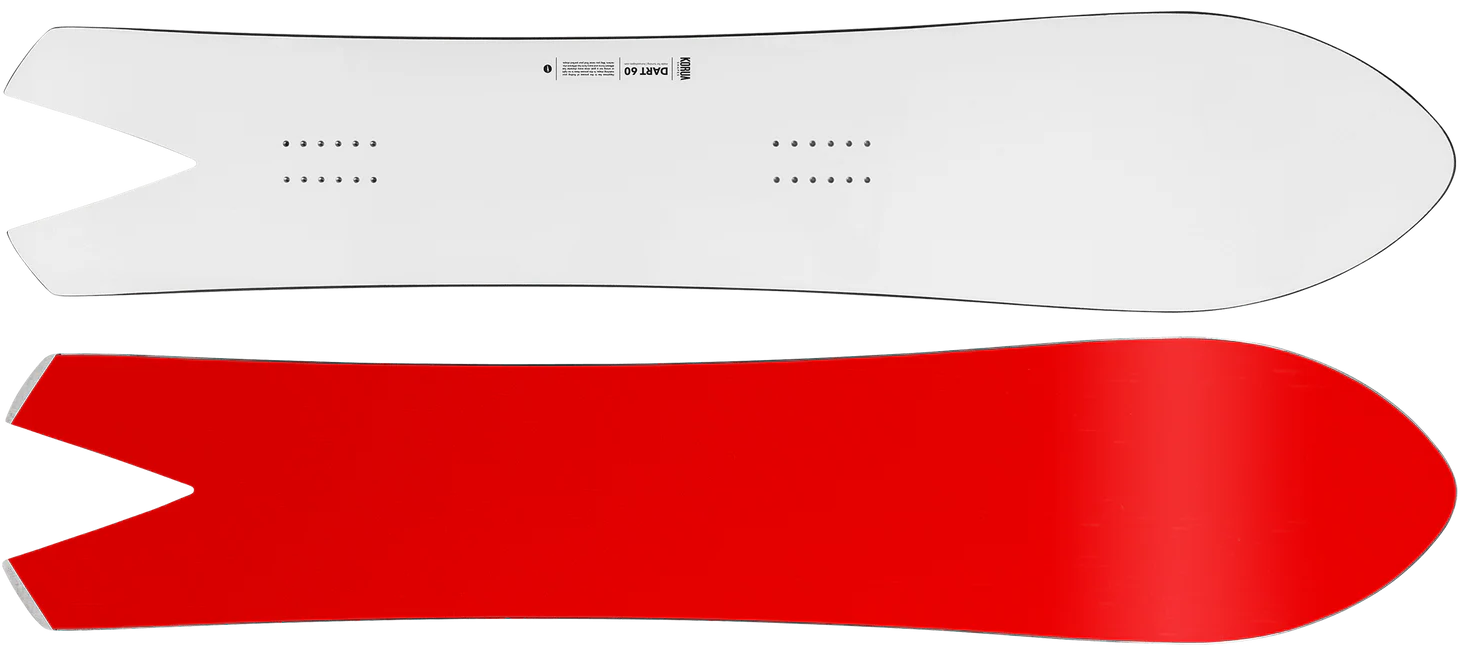
The Korua Dart is one of those pure directional shapes that would look almost as good on the wall as it does under your feet. It’s a proper swallow-tailed powder weapon that blends high-speed carving performance with incredible natural float, making it a versatile choice for riders who want the best of all worlds when it comes to perfecting the art of the turn.
While it’s primarily designed for deep days, and screaming down open powder fields, or cutting between tight trees, our tester was impressed by how well this handled on hardpack, describing it as “playful and surfy” even on piste.
-
Unisex board
-
Flex 6/10
-
Shape Directional
-
Profile Hybrid
-
Best for Eurocarves and slashbacks on the piste, massive slashes off it.
-
Verdict If you're looking for a pure powder gun, they don't come much purer than this.
-
RRP: £440
Lib Tech Orca
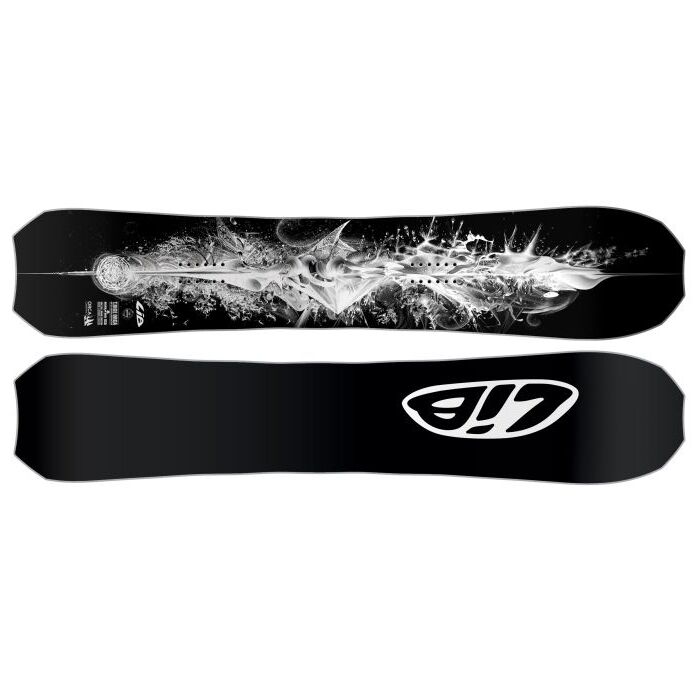
The Orca is basically a Fish board - a short, fat model with a wide nose built for quick turns in powder. But as the name suggests, it’s one that eats most fish for breakfast. It’s softer than some freeride boards, making it easier to throw around in the air, and more forgiving to carve. Thanks to Lib Tech’s patented 'Magne Traction' serrated edges, however, this grips hardpack and ice like a much stiffer board.
The highly directional shape and the setback stance might suggest this isn't really a freestyle stick, but you can actually ride this switch too. “I thought this was going to be a quiver board,” said Travis Rice, who helped to design this strange looking beast, when it first emerged, “but I rode [it] for most of the season”. Given that he’s arguably the best all-round snowboarder in the world, that’s high praise indeed.
-
Men's board
-
Flex 7/10
-
Shape Directional
-
Profile Hybrid
-
Best for Deep days, and British Columbian pillow lines.
-
Verdict This is now one of Lib Tech’s most popular models. One run is all it takes to see why.
-
RRP: £610
Buy Lib Tech Orca: £609 at absolute-snow.co.uk
Nidecker Megalight
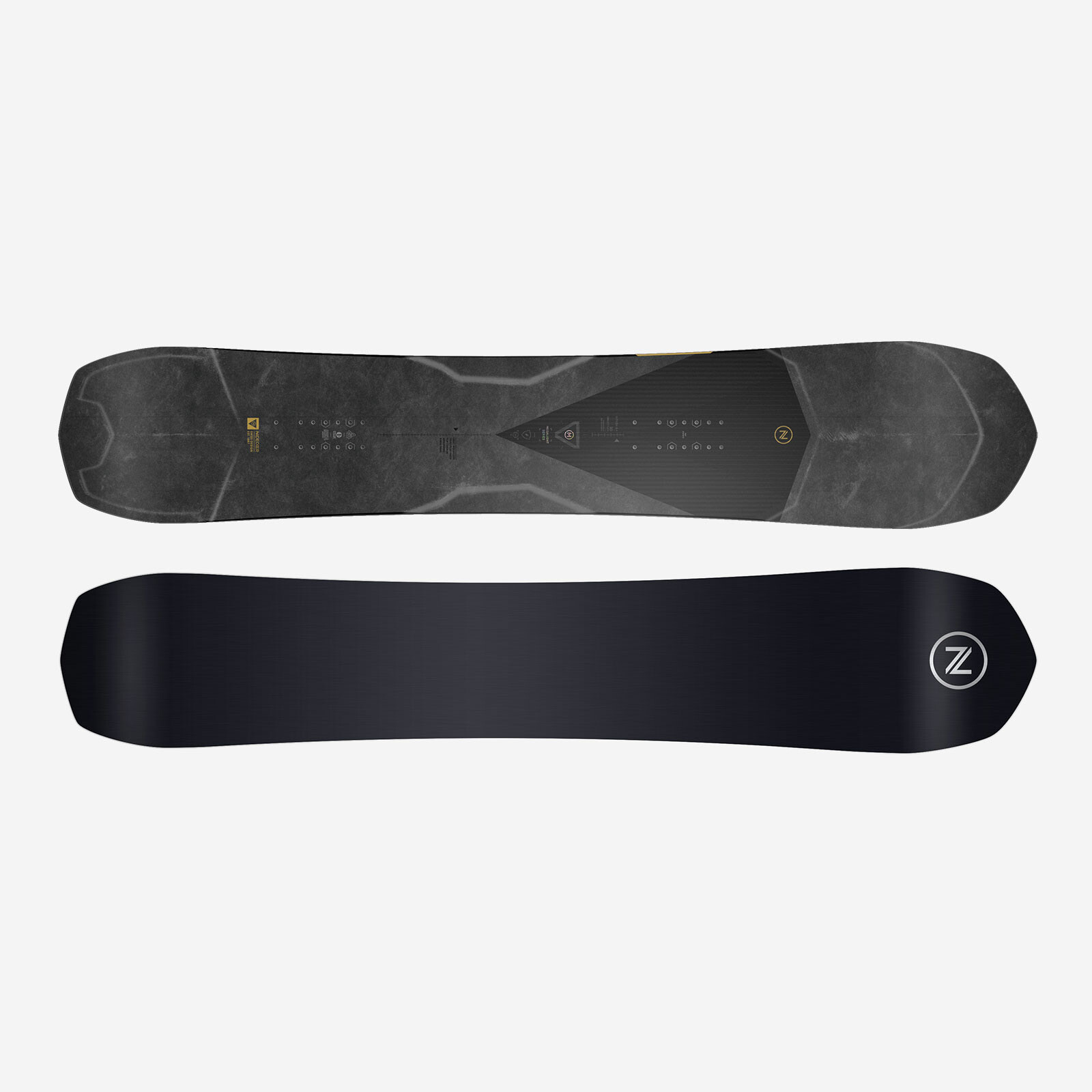
A family-run company founded by Henri Nidecker in Rolle, Switzerland, back in 1887, Nidecker has a long and proud history. Back then it was cartwheels rather than piste carving tools coming out of the family workshop, but they started building snowboards as early as the 1980s too. In the 90s, they pioneered inventions like asymmetric sidecuts and rocker profiles that remain popular to this day.
The latest generation of Nideckers were raised standing sideways, and have poured lots of time and effort into their range in recent years, resulting in high tech boards like the Megalight. This combines weight-saving features, like the brand's Freeflex 3.0 system (which replaces wood and fibreglass in the nose and tail with lighter materials) with a medium flex and a setback stance. It's super fast, and excels at straight-lining Swiss couloirs. If only Henri senior could see what the Nideckers are up to now!
-
Men's board
-
Flex 7/10
-
Shape Directional
-
Profile Hybrid
-
Best for Straightline speed, and responsive carving.
-
Verdict Light, fast and fun, this is a lot of snowboard for a very reasonable price.
-
RRP: £650
Nidecker Megalight: $699 at Nidecker.com
Nidecker Megalight: £620 at Nidecker.com
Weston Japow
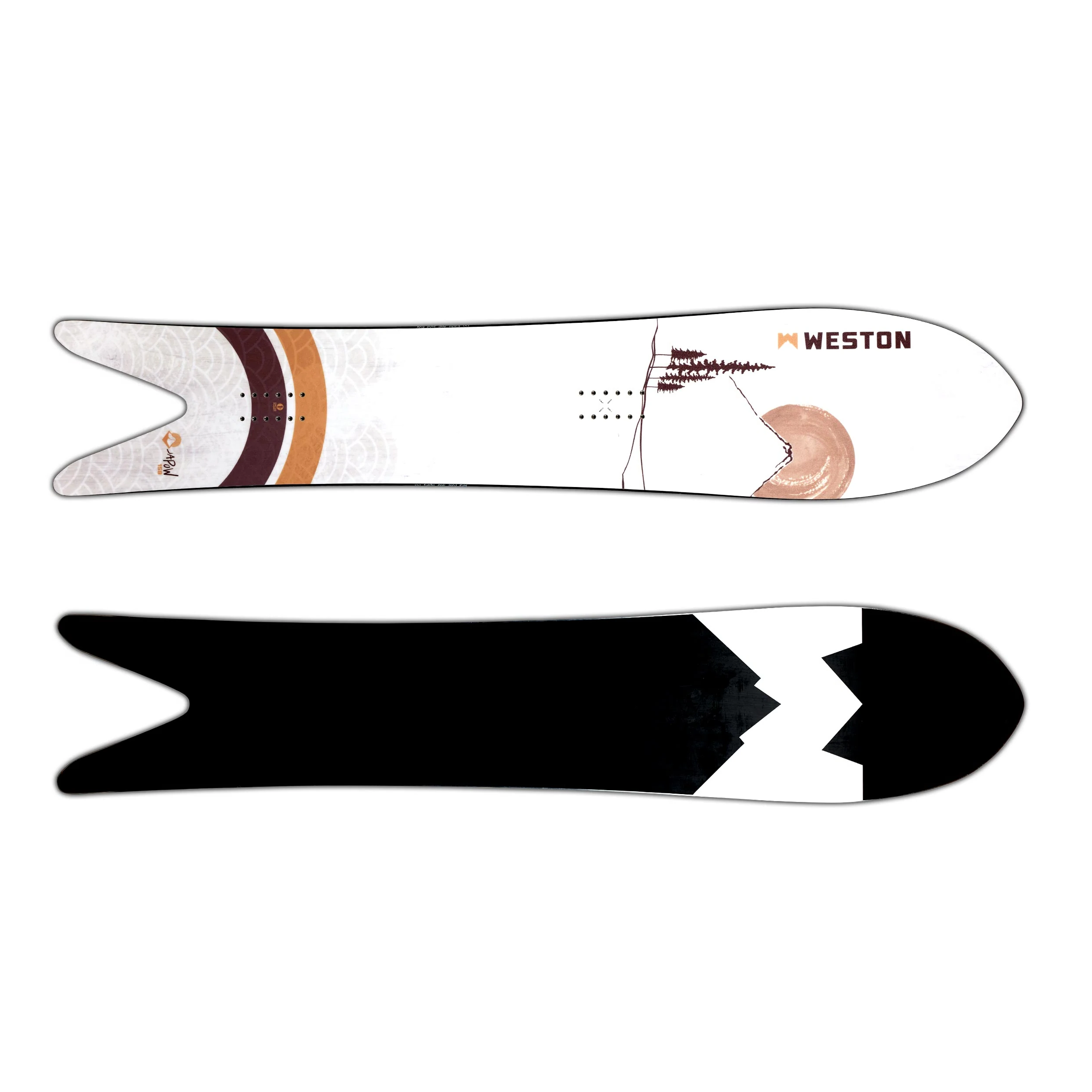
Based in Colorado, Weston are a bespoke brand that only make a small, hyper-specialised range of powder snowboards. Perhaps understandably, these are generally reckoned to be some of the best in the business.
The Japow is the brand’s powder gun for truly deep days (or every day, if you're in Niseko). With a massive spoon nose, and one of the deepest swallowtail cutaways you’ll see this side of 1989, you’ll never have to worry about back leg burn again. Because the brand have worked hard to reduce their emissions, you can feel good about minimising your impact on the planet, and preserving snow for the powder riders of the future when buying this too.
-
Men's board
-
Flex 6/10
-
Shape Directional
-
Profile Hybrid
-
Best for Shredding Niseko-deep powder.
-
Verdict If deep days beneath the treeline are your thing, this board should be in your quiver.
-
RRP: £510
Buy Weston Japow: NOT YET AVAILABLE
Buyer's guide: What to look for in a freeride snowboard
What flex should I go for?
Sometimes called big mountain snowboards, powder boards built for charging Alaskan-style lines tend to be quite stiff (7 to 10 out of 10) and have directional flex patterns - usually with a stiffer tail than nose for driving off the back foot and letting the nose float in powder. If your freeriding is a little more sedate than this, with laps through trees and side stashes within resort bounds on the menu then you'll probably want something a little more forgiving and playful.
Should the shape be directional or twin?
For maximum performance off piste, probably directional. Many powder snowboards have tapered tails, and fatter spoon shaped noses which help lift you in powder.
If you like to get more creative off piste then you should be looking at directional twins which encompass a seriously wide spectrum of snowboards. With these you can still reap some of the benefits of a twin snowboard for backcountry freestyle riding while retaining most of the things that make a snowboard float and send rooster tails in powder.
What about volume shift snowboards?
If you haven't already tried one, try one now. These snowboards shift volume from the length to the width so you get the same surface and contact area but a short shape for manoeuvrability and that extra width gives ultimate float. They're often great fun n piste too.
Which freeride snowboard should I choose?
Assess your needs and riding style first and foremost. If you're only interested in powder turns then get the most spoony nosed directional snowboard you can find, probably with a funky swallow tail.
If you also like a bit of versatility for less snowy days you should take inspiration from all mountain snowboards and reign in the directional shape a little. If you love to throw spins and grabs off cliffs (check you out!) then you're going to need a directional twin tuned for powder and freestyle in almost equal measures.



